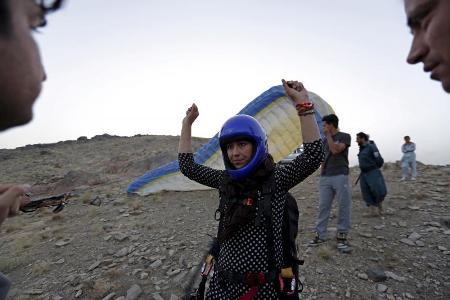What the U.S. Mission Should Be?
When it comes to the fight in Afghanistan, the Western discussion has focused on timelines and troop numbers. Less central to the conversation has been the ultimate aim of the mission and its achievability. As a result, a gap has opened between what Washington says it wants (at least what it says it wants right now) and the actual resources given to the mission.
The gains that the United States and its allies have made in Afghanistan since 2001 are under threat. Al Qaeda training camps are operating in the country. The Taliban is gaining momentum and threatening increasing numbers of cities. As The New York Times reported this week, UN officials “rated the threat level in about half of the country’s administrative districts as either ‘high’ or ‘extreme,’ more than at any time since the American invasion ousted the Taliban in 2001.” The Long War Journal concurs, noting that, according to its data, “the Taliban now controls 35 of Afghanistan’s 398 districts and contests another 35.” In those areas and beyond, Afghans who work with their own government and the international community are facing death threats; indeed, the Taliban has stated outright that journalists now are in its cross hairs. The murder of Toorpaki Ulfat, a UN worker in southern Afghanistan, was only the latest assassination to take place in broad daylight.
The Taliban’s recent overrun of the northern city of Kunduz may have been surprising to American audiences, but the Taliban gains had been coming for months. The national unity government led by President Ashraf Ghani and Chief Executive Officer Abdullah Abdullah has been hampered by infighting between the two leaders. Not helping has been the corrosive corruption in the public and private sectors that the men have pledged to fight. As of yet, the Afghan government has failed to settle on a defense minister, among other posts. As Kabul’s internal battles continue, the power vacuum in the country increases. As it does, the government has shown itself more likely to rely on strongmen forces such as the Afghan local police—given the lack of other options—in order to keep the country from falling under Taliban control.
Against this challenging backdrop, in early October, the administration of U.S. President Barack Obama announced that it would keep U.S. troop levels at around 10,000 through most of 2016. By late 2016 or early 2017, the president said, the number would be reduced to 5,500. Previously, Obama had pledged to pull out all troops by 2017. The Afghan government welcomed the reversal, as did Afghan army forces, which have suffered more than 5,000 casualties this year alone.
What is required now is a clear-eyed look at facts on the ground, a statement of the U.S. mission and goals in Afghanistan, and a commitment to not only invest in training Afghan forces but also to work on behalf of ordinary Afghans struggling to feed their families, educate their children, and keep hope alive for a decent future in a country not dismembered by violence.
In 2009, Obama said, “We must reverse the Taliban’s momentum and deny it the ability to overthrow the government. And we must strengthen the capacity of Afghanistan’s security forces and government so that they can take lead responsibility for Afghanistan’s future.”
Nearly six years later, the same speech could be given. What’s missing are the specifics of what such goals mean in practice and how they can be achieved. Is the United States prepared for a longer-term presence in the country, if that is what is required to achieve the goals Obama laid out back in 2009? And are Afghans? The ghost of the Iraq war looms large over every conversation about Afghanistan, making it all the harder to reconcile a United States that is weary of endless wars with concrete goals that demand a medium- or long-term strategy.
Part of the problem is that the narrative of Afghanistan as a hope-starved basket case settled into the American consciousness long ago, making any investment in the country look ill-advised at best and foolhardy at worst. The only time the country captures the news cycle is when Afghan security forces attack American troops, when the Taliban deals the coalition a stunning blow, or when women face chilling violence. Stories of soldiers risking their lives each day for their country, fathers walking their daughters to school, young people brave enough to go to their offices each morning (despite threats not to at night), and entrepreneurs seeking markets for their goods all get lost.
Yet there has been real progress in the last 14 years, although some of it has eroded in the past year, according to the World Bank. Entrepreneurs have opened small businesses, including technology start-ups, and the number of new business registrations has remained steady compared with 2014. “Real GDP growth is projected to increase to 3.1 and 3.9 percent in 2016 and 2017, respectively, conditioned on improvements in the security environment and strong reform momentum, which could help restore confidence in the economy,” the World Bank notes. In 2002, one million children were in school, most of them boys. Today, 8.7 million children have enrolled in school; nearly 40 percent of all students are girls. From 20,000 teachers in 2002, the country now has close to 200,000. From 1,600 maternal deaths per 100,000 births in 2002, the maternal mortality ratio has fallen today to 327 per 100,000 births. The country now counts more than 2,000 health facilities across Afghanistan.


